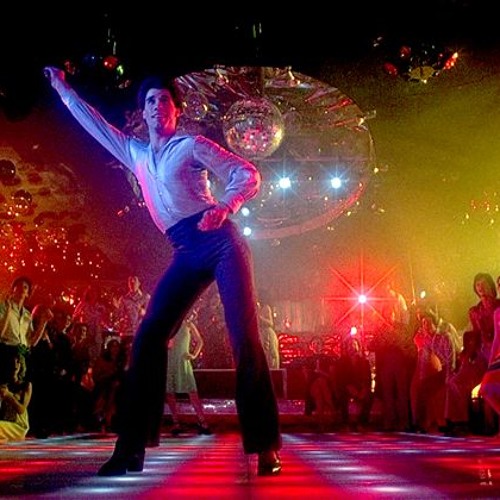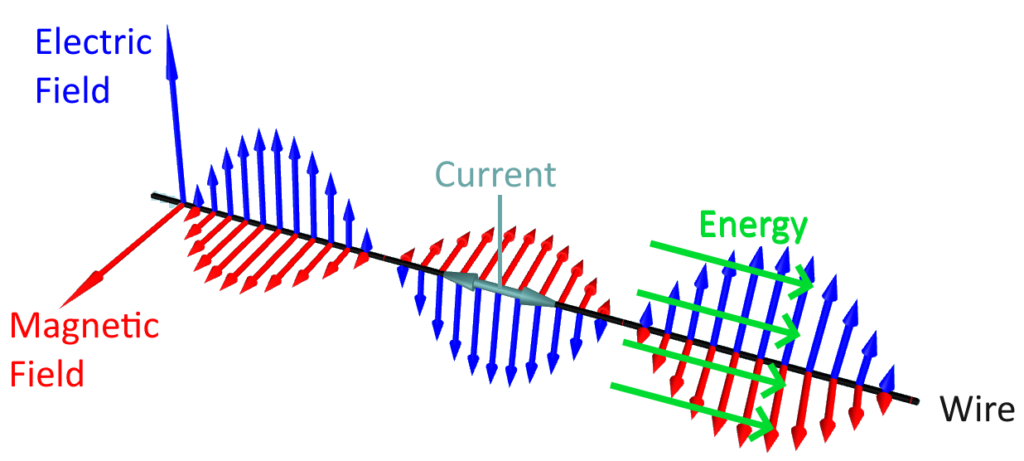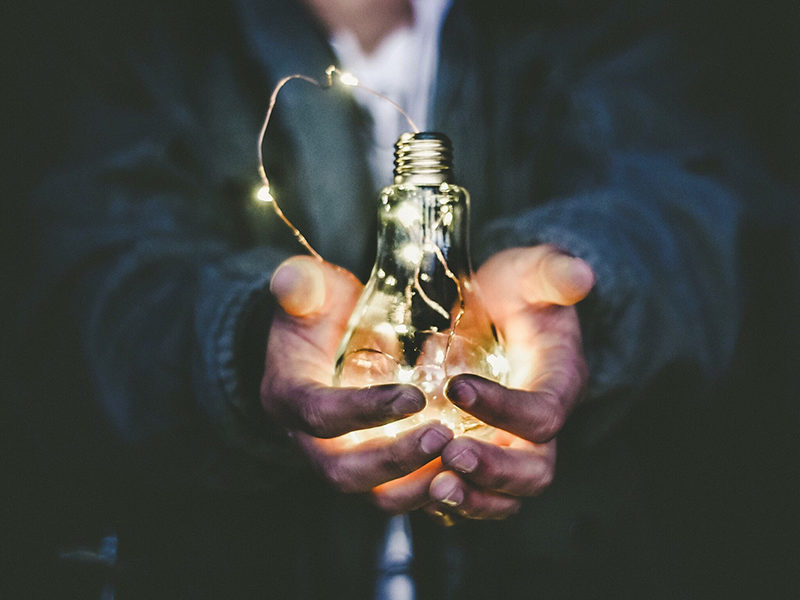An article by Jarrod Hollingworth; Technical Lead at Energy One
Throw out what you think you know about electricity (and the more you know, the more you may be surprised by what you don’t know). It’s a fundamental part of the sector that we work in, but day-to-day, we rarely get involved with the physical aspects of generation, transmission and consumption, particularly at a fundamental level, and the detail will likely surprise you. Read on to find out how electricity really works…
Let me repeat the headline: Electricity does not flow through wires! Yes, I read the headline the first time. If it doesn’t flow through wires then how does electricity get from the power station to my house? Why do we have wires? Where does it flow then?
‘Watt’ we know
We are led to believe that electricity (the common term for electrical energy) flows through wires like water flows through a pipe, and that a light switch works like a tap. When the switch is turned on, electrons flow through the switch and the wire at the speed of light and through the light bulb, and this electron flow heats up the filament in the light bulb because of friction. The electrons originate at a power station and travel along high voltage transmission lines, through the power lines in the streets, and eventually into the wires in our house. The switch lets them keep moving through the wire to the light bulb. The electrons flow to the house in a positive wire, and either get used up like fuel, or return to the power station on a negative wire. The electrons get pushed along by the ones behind. Basically speaking, electrons = electricity.
That’s how it works, right? Where is the problem? No, that is not how it works. In fact, none of the above is true. None!
To understand how electricity works (caveat: no-one yet knows exactly how it works, but we have a very good idea), you need to get into quantum electrodynamics. We won’t go that far, but to understand why electricity does not flow through wires, we have to know some basic details at the atomic level.
We’ll be using the “power station to light bulb” scenario and the details will be simplified a bit. Here’s a quick refresher on basic electricity to get you started:
- Voltage (V): This is like the pressure of the electricity, measured in Volts. A higher voltage means that there is a greater potential for electricity to flow (raise it high enough and electricity will even jump large distances though the air). Different countries use different voltages, typically in the 100-240V range. With AC electricity (see below) the voltage alternates between positive and negative in a curved sine wave pattern
- Current: This is the flow of charge from electrons within a wire. This is the more technical definition of electricity, but the current does not provide the electrical energy that is used to power our devices
- Alternating Current (AC): The electrical current that is generated by the power station and received at our homes continually changes direction. For a short time, the current flows toward your home, and then for a short time, it flows away from your home, according to the frequency
- Frequency (Hz): The frequency of the changing current and voltage is measured in Hertz, or cycles per second. Most countries use either 50Hz or 60Hz
- Wires: All objects, including metallic wires, consists of atoms. Each atom contains one or more relatively “large” positively charged protons in the core and an equal number of “tiny” negatively charged electrons spinning around the core. Metals consist of a regular arrangement of densely packed atoms that have electrons that can freely move between the atoms. These properties make them good conductors of electricity. A single meter of thin (20 gauge) copper wire contains around forty thousand billion billion copper atoms!
- Transformer: An electrical device consisting of two coils of wire wound around an iron core that is used to increase the voltage and decrease the current, or decrease the voltage and increase the current
Schools, and most university courses, teach electricity based on voltage, current and other properties of electrical components such as resistance and capacitance. These are actually just simplifications called the lumped-element model and circuit theory, and ignores complicated details like electrical changes over time, physical layout and proximity of circuit components, the resistance of conducting wires, the effects of high speed switching and interference. These considerations make designing modern electronic equipment difficult, as the real effects of electricity are difficult to measure or simulate.
The ‘shocking’ truth

Let’s establish a few facts. The above diagram represents how electricity gets to us:
- AC electricity is generated at power stations, transmitted over long distances, and consumed by devices in your house, such as light bulbs or electrical appliances
- High voltage AC is transmitted over long distances. Transformers are used to increase the voltage and lower the current produced by the power station before the connection to the wires on the tall towers that form the transmission network. With a lower current, less of the energy is wasted heating up the wires
- Transformers are then used at substations in cities/towns and at local points at the street level in the distribution network to decrease the voltage for use in your house
- The wiring and wall outlets in most houses have three wires: an active wire, a neutral wire and a ground wire. Only the active and neutral wires connect to your house from the power lines in the street
- When you turn on the light switch, electrons flow in the wire but get this!
- There is no continuous wire between the power station and your house for the electrons to reach you. There are several physically separated wires along the way with gaps between them. These gaps are present in each transformer that increases or decreases the voltage and the electrons cannot jump these gaps
- The electrons move in the wires at a miniscule rate, around one centimeter per minute. This movement is critical, as we will see later, but does not deliver the electrical energy
- The movement of electrons with AC electricity changes direction. The electrons just move back and forth less than half the width of a human hair and never actually go anywhere. Those electrons moving the light switch? They stay in the light switch and never get to the light bulb!
- Strong electrical energy continually flows to the light bulb while the light switch is turned on, even when the electrons are moving away from your house. But how?
‘Short circuit’ your skepticism on flowing electrons
Here’s why the light bulb cannot be powered by electrons flowing through wires:
Where do the electrons come from? Power stations can’t manufacture electrons and electrical devices can’t consume them. Creating and destroying electrons is impossible except on a tiny scale in quantum mechanics experiments. Electrons just pre-exist in the metallic wires and can be moved around. Do you have a power cable sitting in your cupboard? It’s full of electrons ready to wiggle!
Do the electrons flow in a loop? If you have been led to believe that the power station moves electrons toward your house on one wire and they flow through the light bulb and back to the power station on a second wire, then consider this: there is no return wire going back to the power station! There is only a single, active, wire between the power station and your house (with a break/gap at each transformer) to transmit electricity. The neutral wire that connects to your house only goes back as far as the nearest transformer in your local area or substation, where it connects to the ground (physically).
Do the moving electrons in the wire power the light bulb? You might think then that it’s just the wiggling of the electrons (perhaps billions of them) in the light bulb filament from the alternating current that lights the bulb, but this electron movement from the current (called electron drift) is just too slow to provide enough energy. The wire makes the flow of electricity possible, but the electricity doesn’t flow through the wire itself!
‘Ohm’y! So there’s only a single wire, it has breaks in it, electrons aren’t created and they don’t flow, and electrons don’t provide the energy anyway. Sure, that sounds logical! Next you’ll tell me that the electricity appears out of thin air!
How electricity REALLY works: John TraVOLTa and The Bee Gees

The electricity works in five stages: Electric Field, Current, Magnetic Field, Energy Flow, Energy Transfer:
1. Electric Field: In the power station, steam or water is used to rotate a magnet within coils of wire in generator turbines, to transform kinetic (movement) energy into electromagnetic energy. This creates an electric field and electric charge that extends all the way along the active wire from the power station to the light switch at the speed of light. The charge is present along the surface of the wire but the electric field is present outside the wire. Nothing physically travels along the wire
An electric field is an invisible force for electric charges (like electrons), just like how gravity is an invisible force for objects:
- The strength and direction of the electric field oscillates along the wire in response to the frequency of the electricity. At one moment, the field is strong above the wire at one point, and the next moment, it is strong below the wire at that point
- Think of the oscillating electric field as John Travolta in a satin shirt standing on top of the wire dancing to The Bee Gees’ Night Fever, doing the pointing dance move with his hand and arm fifty times per second (50Hz). The strength of the electric field is represented by how far his arm is extended, and the direction changes as he alternately points up and down
- Now picture a line of these satin shirt Johns along the entire length of the wire doing the pointing dance as a Mexican wave. The Johns aren’t travelling, there is just a delay from one to the next so you see a wave-like pattern as the arms move
2. Current: When you turn on the light switch, the electric field (the line of satin shirt Johns) and charge continue past the switch along the wire to the light bulb. The circuit is now complete as the bulb is also connected to the neutral wire. The force exerted by the oscillating electric field on the electrons in the wire now causes a current and the electrons within the wire wiggle back and forth
3. Magnetic Field: Electrons moving in unison in a current create an invisible magnetic field (just like a magnet) also outside the wire. It is oscillating in strength and direction in time with the electric field, in a wave like pattern at fifty times per second but at right angles to the electric field. Think of this as another line of John Travoltas, this time in white suits, standing horizontally on the side of the wire, with their Mexican waves in sync with the first line of satin shirt Johns. When a satin shirt John on top of the wire is pointing straight up, the white suit John standing on the side of the wire below him is pointing straight out. A hundredth of a second later, satin shirt John points down and white suit John points to the other side
4. Energy Flow: When there is a combination of an electric field and magnetic field at 90 degrees to each other, energy is transmitted through the fields along and outside the wire (it sure is a disco party). These electromagnetic fields conducting energy is the electricity! You can’t see it, and nothing is physically travelling. What even is energy?!

5. Energy Transfer: The energy is channeled into the light bulb’s metal filament from the fields surrounding it and this scatters the free electrons in the filament around at high speed (as opposed to the slow drift speed from current). These electrons bump into the cores of the atoms within the filament, transferring their kinetic (movement) energy to thermal (heat) energy, to the point where the filament becomes so hot that it glows (unfortunately less than 5% of the energy in these types of bulbs is converted to light and the rest is lost as heat!)
So the real answer is…
Electricity flows through the air!
Or more correctly: Electricity flows through the space around the wires – through the air around the high voltage transmission lines, through the insulating plastic encasing the wires in your house (yes, through the plastic!), through the vacuum or gas inside the light bulb.
The fields are present in all of the three dimensional space around the wires, not just in two single lines of Johns as discussed. That’s a whole lot of John Travoltas. The Bee Gees sung it best: “Listen to the ground, there is movement all around. On the waves of the air, there is dancin’ out there. Night fever, night feeverrrrrr, we know how to do it!“
So why do we need wires? They allow us to channel electromagnetic fields along a path using a concentrated source of free flowing electrons.
What about the gaps in the wires? Transformers have an input coil of wire connected to the power source and an output coil of wire connected to the destination. There is no physical connection between the coils, but a strong oscillating magnetic field generated by the input coil can be transferred to the output coil, and this creates oscillating electron flow in the second coil, just as if the two were connected together, except that the voltage and current have been changed (proportionally based on the number of loops in the two coils). About 1% of the energy is lost at each transformer.
Further information
A great many sources were used as references for the information presented in this article, including discussions on physics forums, published papers, educational videos and various articles and presentations. The following videos do a great job at explaining the concepts graphically. If you decide to investigate further, please be wary that there is a lot of misinformation on this topic, even from experienced electrical engineers and physicists, so finding good and accurate articles or answers to even simple questions can be difficult.
Circuit Energy doesn’t FLOW the way you THINK!
Contents: Electric and magnetic fields and the direction of energy flow.
Note: There are errors in this video relating to the direction of the fields and the energy flow, but the overall concept is ok and the presentation is good. In reality, a lot of the energy can and does flow in the same direction as the charge and follows the path of the wire and does not (largely) get directed into the wires from the fields around them.
Does Electricity REALLY Flow? (Electrodynamics)
Contents: Description and visualisation of electron flow in a current, and what makes a good electrical conductor.


